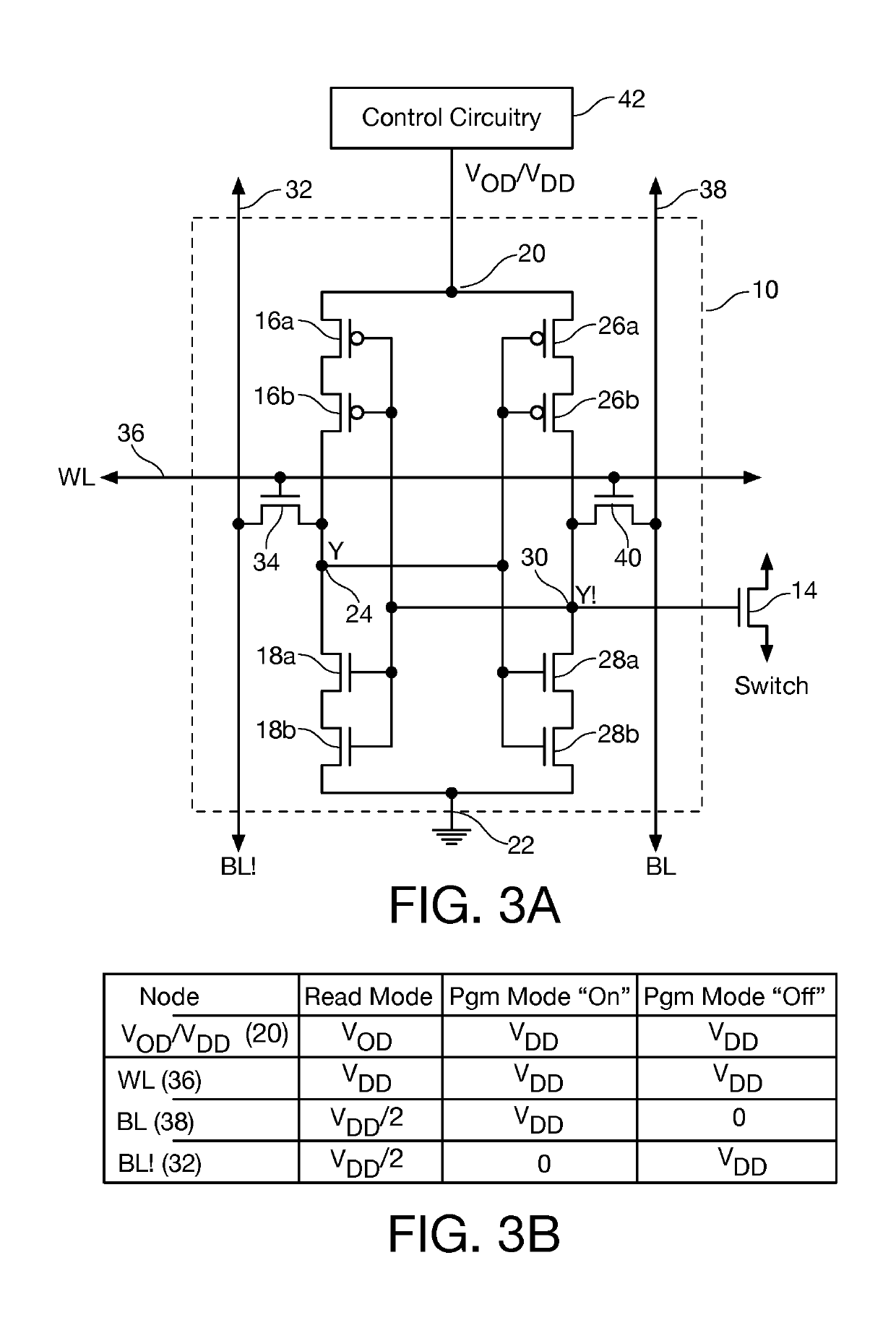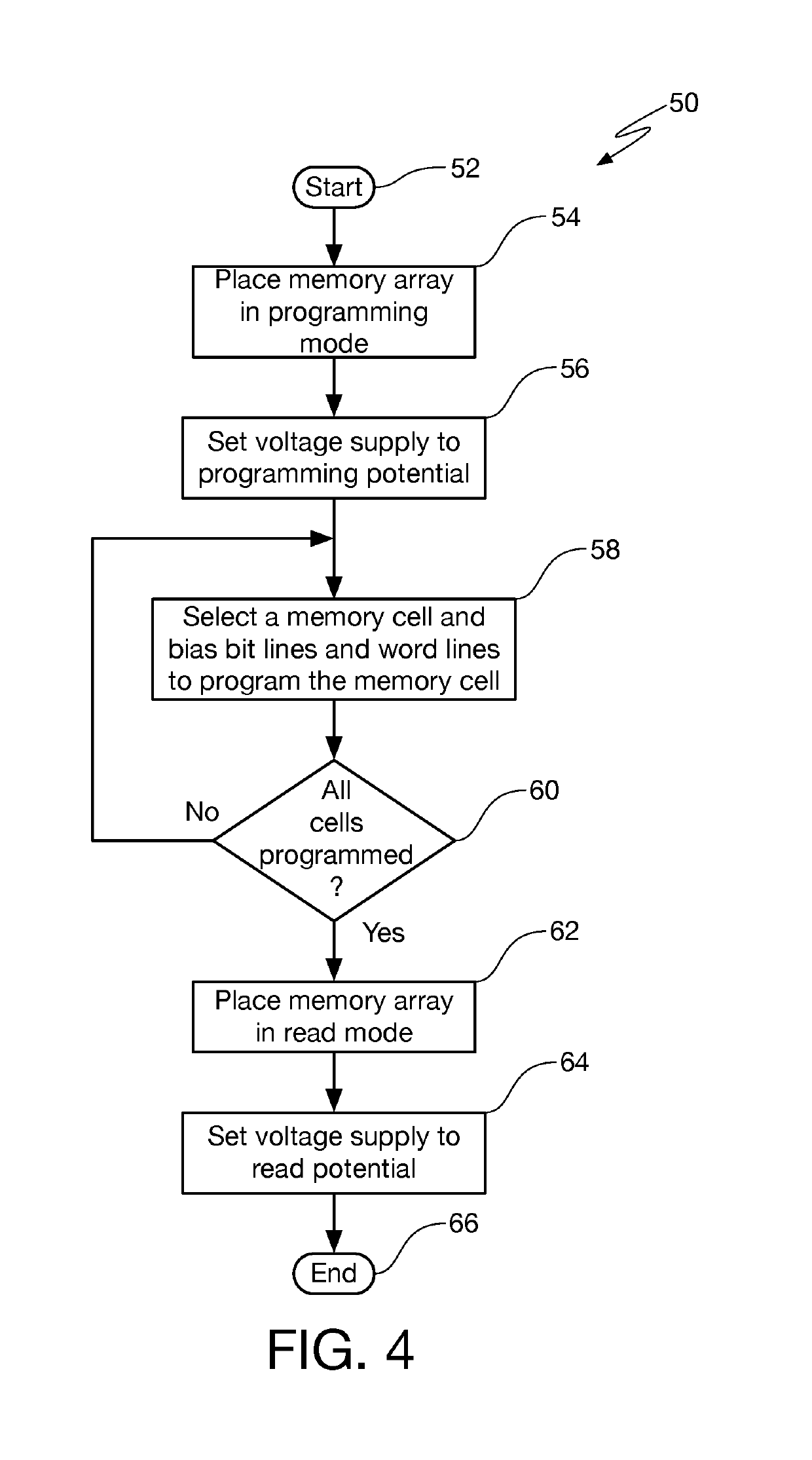SRAM Configuration Cell for Low-Power Field Programmable Gate Arrays
a configuration cell and gate array technology, applied in logic circuits, digital storage, instruments, etc., can solve the problems of static power consumption of fpga, introduce new problems, and long channel devices in the sram cell take up extra die area on the integrated circui
- Summary
- Abstract
- Description
- Claims
- Application Information
AI Technical Summary
Benefits of technology
Problems solved by technology
Method used
Image
Examples
Embodiment Construction
[0024]Persons of ordinary skill in the art will realize that the following description of the present invention is illustrative only and not in any way limiting. Other embodiments of the invention will readily suggest themselves to such skilled persons.
[0025]Referring now to FIG. 3A, a 10-transistor static random-access memory (SRAM) configuration cell (shown within dashed region 10) driving the gate of an n-channel transistor switch 14 for use in a user-programmable integrated circuit such as an FPGA is shown. It is to be understand that a configuration cell does not require high speed switching, since the cell is set at initial configuration, and is generally not changed thereafter. The SRAM configuration cell 10 includes a first pair of series-connected p -channel FinFET transistors 16a and 16b in series with a first pair of series-connected re- channel FinFET transistors 18a and 18b disposed between two voltage supply rails 20 and 22. The drains of the second of the first pair o...
PUM
 Login to View More
Login to View More Abstract
Description
Claims
Application Information
 Login to View More
Login to View More - R&D
- Intellectual Property
- Life Sciences
- Materials
- Tech Scout
- Unparalleled Data Quality
- Higher Quality Content
- 60% Fewer Hallucinations
Browse by: Latest US Patents, China's latest patents, Technical Efficacy Thesaurus, Application Domain, Technology Topic, Popular Technical Reports.
© 2025 PatSnap. All rights reserved.Legal|Privacy policy|Modern Slavery Act Transparency Statement|Sitemap|About US| Contact US: help@patsnap.com



